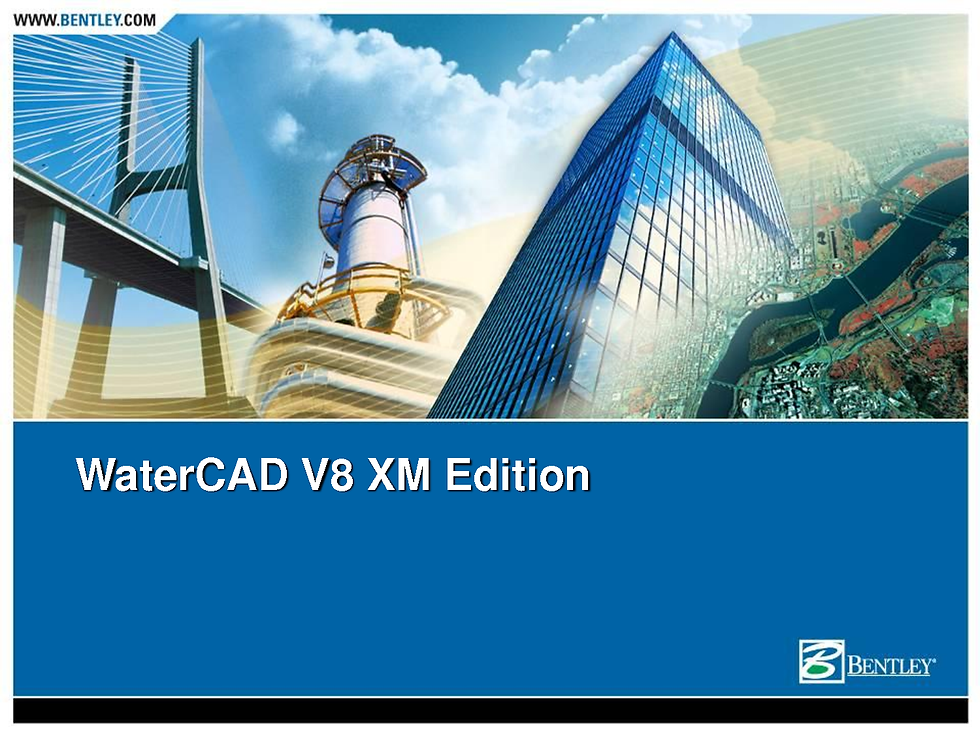Water Cad
- Course Outline
- Jan 5, 2016
- 2 min read
Part: 1
-Introduction to Modeling.
-Theory hydraulic models (Energy principle, Conservation of mass)
-Introduction to Water CAD network elements-looking at inputs required :( Pipe, Junction, Tank, Reservoir, Pump, Valve)
- Do Cyber net element tutorials- pipe, pump, reservoir, tank, and valve?
-Practice linking the network elements to create a simple model.
-Try creating a simple system with a pump, using the pump performance curve in your notes as input data.
Part: 2
-Read Model Results & Learn How to Reoperation Model Results.
-Practice calculating and displaying model results using file Paula PWDI
-Run steady state Model & extended period analysis
-Make Result tables, Colour coding, annotation, profiles and contour maps for the different analysis and time steps in the extended period analysis.
-Check total demand for exceed the minimum flow from the source spring
-Check pressures and pipe sizes reasonability.
Do compare with the hand worked solution.
-Building blocks of a hydraulic model according to (user demand data
, Elevation/topography, Pipe network layout)
-Extended period simulation- flow patterns
Part: 3
- Simple urban system- design, calculates report and check the most cost effective combination of pipes.
- Calibration of a hydraulic model: [SOPAC Miscellaneous Report 395 – Dawe] and check Data required for calibration and if simulate real events?
-Learn how the simple urban system, demand, and roughness calibration factors affect your previous design?
-Are you taking into account leakage and the daily peaking factor?
- Cyber net and other software: as AutoCAD, Access, Excel, Map Info (GIS)
Part: 4
-Pumps and Valves control function
-Locate problems in model using the find function.
- Learn how to create scenarios for 10 and 20 years in the future using the simple urban system you've
Part: 5
-Other functions of Cyber net:
-Learn fire flow and water quality tutorial
- Uses of hydraulic modeling/ interpreting results to :( Identifying low pressure areas, Design/effect of upgrades, Leakage estimates, Operation and maintenance)













Comments